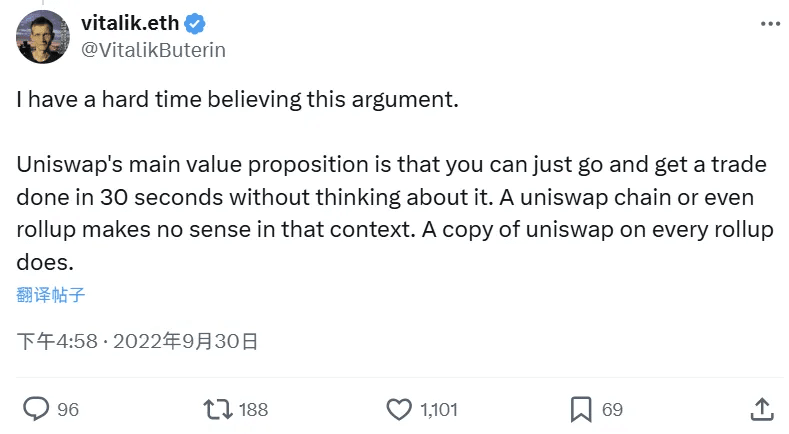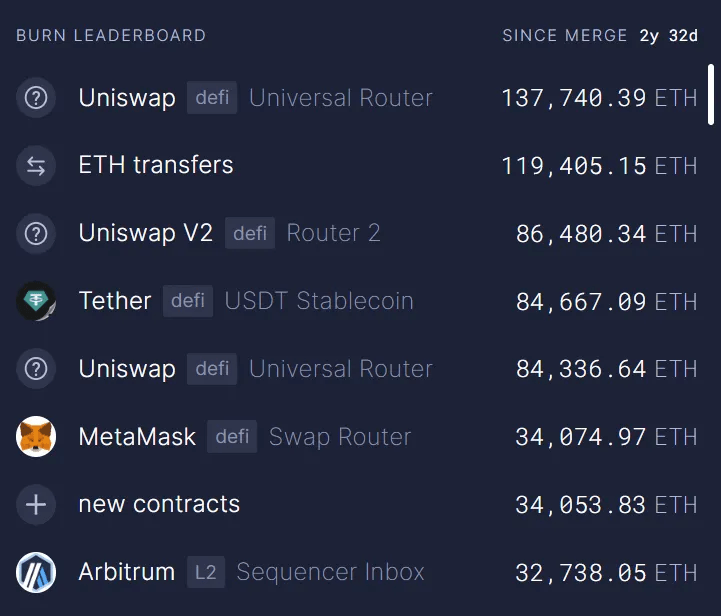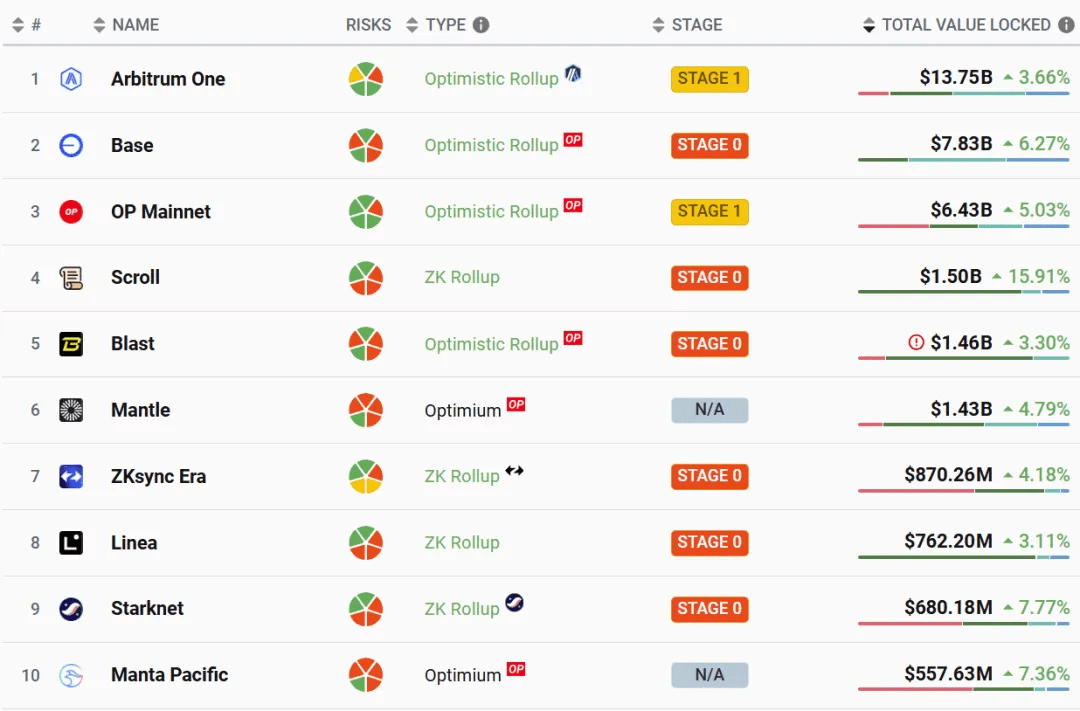Recently, Uniswap Labs officially launched Unichain, an Ethereum Layer2 network based on OP Stack, and launched the testnet. As the mainstay of the Ethereum ecosystem and DeFi field, the crypto community has paid close attention to the important progress of Uniswap. Vitalik and other KOLs have expressed different opinions, but the most concerned about this matter may be those old Ethereum FUDers, who have begun to analyze the death countdown of ETH after the "defection of the largest DApp in Ethereum"...

01
Is Unichain really Uniswap's "defection" route? According to official information, the purpose of Unichain's launch is mainly to solve some challenges of DeFi, such as cost, efficiency, and the need for seamless cross-chain swaps with fragmented liquidity. Simply put, the Uniswap project will continue to improve the user experience and competitiveness of its own products by customizing a unique Layer2 network.
In this regard, the comments made by various KOLs are mixed. In addition to the relatively positive views, the more eye-catching may be the opposition from Vitalik and others. In fact, as early as 2022, Vitalik commented on the opposition to the Unichain concept on social networks. He said: "The main value proposition of Uniswap is that you can complete transactions within 30 seconds without thinking too much. In this case, the Uniswap chain and even Rollup are meaningless. It makes sense to have a copy of Uniswap on each Rollup."
In general, Vitalik and other opponents believe that Uniswap should focus on successful application areas and deploy the most successful DeFi application on the main network and each Layer2, rather than distracting attention to developing (reinventing the wheel) a new chain. Of course, the background two years ago was that the Layer2 solution had not yet been implemented. If UniChain was mentioned at that time, it would definitely be an independent application chain, not a Layer2 chain. Therefore, Vitalik and other Ethereum crypto community KOLs strongly opposed it at that time.
Compared with the opposition within the community, some people outside the Ethereum community, who have been pessimistic about Ethereum for many years and often publish ETH FUD analysis, seem to have found a new and powerful "argument" here. They further analyzed from the previous point of view that Layer2 sucked the blood of Ethereum that UniChain would be Uniswap's "betrayal" of Ethereum, and believed that the DApp with the largest contribution to Gas destruction on Ethereum is about to take away Ethereum's last income, and Ethereum's Gas fee income will be relegated to the sidelines and finally on the verge of "death".
Ethereum burn ranking since the merger Source: Ultrasound money
Obviously, the launch of UniChain two years later triggered not only extensive discussions within the Ethereum community, but also the fact that it was contrary to Vitalik’s views was also considered a slap in the face by Uniswap. However, compared with the discussions within the community of Vitalik and others, these FUD voices from outside are more likely because Ethereum has made too many “enemies” in recent years, and the Layer2 route, which was originally not optimistic, has attracted the favor of more and more large companies and institutions. The success of Layer2 has blocked the roads of many cross-chain tracks and some high-performance public chains. Only when the development of Ethereum stagnates can they gain more market space. This is also one of the fundamental reasons why ETH FUD is flying all over the sky.
Uniswap founder Hayden Adams recently responded to the controversy by saying: “Zero-sum bias is a big problem in the crypto community. Don’t stand on the side of high fees. Scaling through L2 is good for Ethereum.”
Having said that, it is a misunderstanding to think that Unichain is UniSwap's "defection" from Ethereum. Although on the surface, a new chain has been developed in Layer2, unlike the previous "relocation" of dydx to join the Cosmos ecosystem independent application chain camp, UniChain not only stayed in the Ethereum ecosystem, but the Ethereum mainnet is still Uniswap's most important "battlefield". Most of the DeFi funds in the entire crypto ecosystem are in Ethereum, and the big funds of big players pursue "security and stability" more. This is one of the reasons why Ethereum is an irreplaceable "wall". The high frequency and timeliness of interaction needs of UniSwap users and dydx users are different. Early deployment of the Ethereum network and rooting in a safe and stable Ethereum ecosystem are also one of the biggest advantages of Uniswap as an important DeFi infrastructure.
In the foreseeable future, Uniswap on the Ethereum mainnet will still gather more liquidity to meet the needs of large-scale secure swaps by large investors, but some small-scale high-frequency transactions will need to cross to Layer2 such as UniChain.
To give a simple example, if Ethereum is a huge farmers' market, Uniswap is the most popular vendor with the largest traffic in a conspicuous place in the market. As the business is getting better and better, he rents a shop with an independent storefront and a warehouse next to the entrance of the farmers' market. The shop space is independent, more spacious and equipped with air conditioning, making it more comfortable for customers to shop. The stall and the shop meet the needs of different customers respectively.
Therefore, the "defection" theory is untenable, and leaving is impossible. Uniswap still wants to be the most popular player in the Ethereum ecosystem.
02
Why UniChain is necessary? It seems that since UniChain was proposed two years ago, Uniswap has also made a difficult decision. From the perspective of Vitalik and some people in the Ethereum community, Uniswap has been very successful and there is no need to do anything extra. However, from the perspective of the Uniswap community and development team, this may not be the case. At least it has the following sufficient reasons to launch UniChain: 1) Optimize and expand to meet challenges and competition. Although Uniswap has been very successful, it actually faces many challenges and competition in the future of multi-chain (including multi-Layer2). In addition to the advantages of the Ethereum mainnet, in some Layer2 and high-performance EVM chains, for various reasons, many public chains have "local" new DEX brands that occupy the top spot in the DEX track, such as Pancakswap, QuickSwap, etc. At the same time, challenges such as the fragmentation of existing Layer2 liquidity also make it difficult for Uniswap, which is only an upper-layer application, to exert its strength.
Unichain should have some considerations in choosing OP Stack as part of Optimism Superchain. Among the top Rollups in Layer2 TVL ranking, there are Base and Blast in addition to OP Mainnet, which have brought together more than 10 billion US dollars of liquidity. In addition, many crypto-native teams SNX, Mantle and external manufacturers such as Sony have deployed and adopted it. Superchain can be said to have continuous funds and abundant talents. As a "homomorphic" chain, it is easier to solve interoperability problems while having consistent R&D paths and sharing technologies. Currently, UniswapLabs has stated that it is working with OP Labs to achieve native cross-chain interoperability, solve the liquidity split problem between Layer2, and bring a seamless cross-chain Swap experience.

Simply put, by deploying a Layer2 at a lower cost through OP Stack, you can join the Layer2 R&D group, share technical achievements, accelerate the interoperability between Layer2, solve the major problem of liquidity fragmentation, and of course, problems such as MEV can be solved through bottom-level customization, which are all things that Uniswap could not control when it was only a Dapp. 2) The inevitable choice after DApp becomes bigger and stronger DApp deployed on the public chain platform will definitely think about the future development roadmap during its development and growth. In addition to the optimization and expansion mentioned above, there are more demands from the community and pressure from token empowerment. This is why UNI rose as soon as the news of UniChain came out. In fact, when each DApp grows from a small circle to a large community, even if the project party does not want to move, the community will push the project party forward. At the same time, the income, talent and technology reserves of high-quality projects are quite sufficient, breaking through bottlenecks and even crossing tracks brings more possibilities, and "becoming bigger and stronger" has become a matter of course.
For example, many offline or online shopping malls will have a large number of brand merchants, such as Uniqlo, Starbucks, KFC, etc. After these brands occupy a certain market share in this track in the early stage, they will often have their own official independent channels, such as independent official shopping malls, official mini-programs, etc. Different from the form of settlement, through official independent channels, they own all data generated by users, are flexible and independent, and collect and meet more personalized needs of users through personalized marketing activities.
In the future, UniChain may be able to leverage its differentiated advantages to share the liquidity of the Uniswap protocol, attract more DeFi applications, and create a unique ecosystem, which is also a beautiful vision.
3) Uniswap: This is my freedom. In the open and free values of encryption, no underlying infrastructure can lock any users and funds like centralized traditional finance. Of course, the development team cannot be locked. The multi-chain interoperability ecosystem is still the future. The decentralized Ethereum community will not and cannot forcibly lock these users and funds. They will maintain free flow, the application ecosystem will flourish, the fittest will survive, and the various products brought by developers will compete freely in the free market.
Whether Unichain is a major strategy of Uniswap or just a "trial run", it is the freedom of Uniswap Labs and the Uniswap community, and everything is for the common interests of the community.
03
Is it a good thing or a bad thing for Ethereum? From the analysis of the wrong interpretation of ETH FUD, Unichain will accelerate the death of Ethereum. Of course, it is actually the opposite. The launch of Unichain is not a bad thing. It can not only promote the solution of the cross-chain liquidity problem of Layer2 of the Ethereum ecosystem and bring prosperity to the ecosystem, but also help the adoption of Layer2 solutions. More big companies like Sony are on the way.
From another perspective, the launch of Unichain is inevitable. Although it brought the opinion of Vitalik and others that it is "unnecessary and not recommended", it directly confirmed the correctness of Ethereum's Layer2 route at the time and the foresight of a number of development teams in the Ethereum community. Imagine if there were not so many successful and open Layer2 solutions at present, then these Dapps would grow up and would most likely become unable to tolerate Ethereum's high fees, low efficiency and other problems, and would directly switch to independent chains to solve the scalability problems themselves because they believe that there is no future and no development. That means truly leaving the Ethereum ecosystem, and even being forced to go to the opposite side of Ethereum and become an "Ethereum killer."
The current result is the process of self-innovation and transformation of the Ethereum ecosystem. Now is no longer the era of expensive and slow transactions. Applications deployed in the large ecosystem of the Ethereum platform have more and better internal choices. At the same time, they keep their original intentions unchanged, so there is no need to compromise with centralization in exchange for scalability and performance.
In any case, we respect the choice of the UniSwap community and hope that UniChain will continue to create a different future for the DeFi track and bring more new possibilities. ETH FUD often clings to the issue of Layer2 reducing and sucking the gas fee of the Ethereum platform. In fact, you only need to figure out this question: Is the value of Ethereum just to collect gas fees? Infrastructure such as client wallets, expansion plans, application landing, and user experience, while leading crypto innovation at the same time, are the value of Ethereum. When Ethereum's gas fee was very high, they said it was bad news; when Layer2 was proposed, they said this route would fail; Layer2 successfully expanded, gas fees dropped, and it was said to suck Ethereum, and they still said it was bad news... As the founder of Uniswap said, the crypto community is full of zero-sum bias, and some bears have not even really understood Ethereum, they are just standing on different positions. So it is necessary to DYOR to avoid being easily misled.









